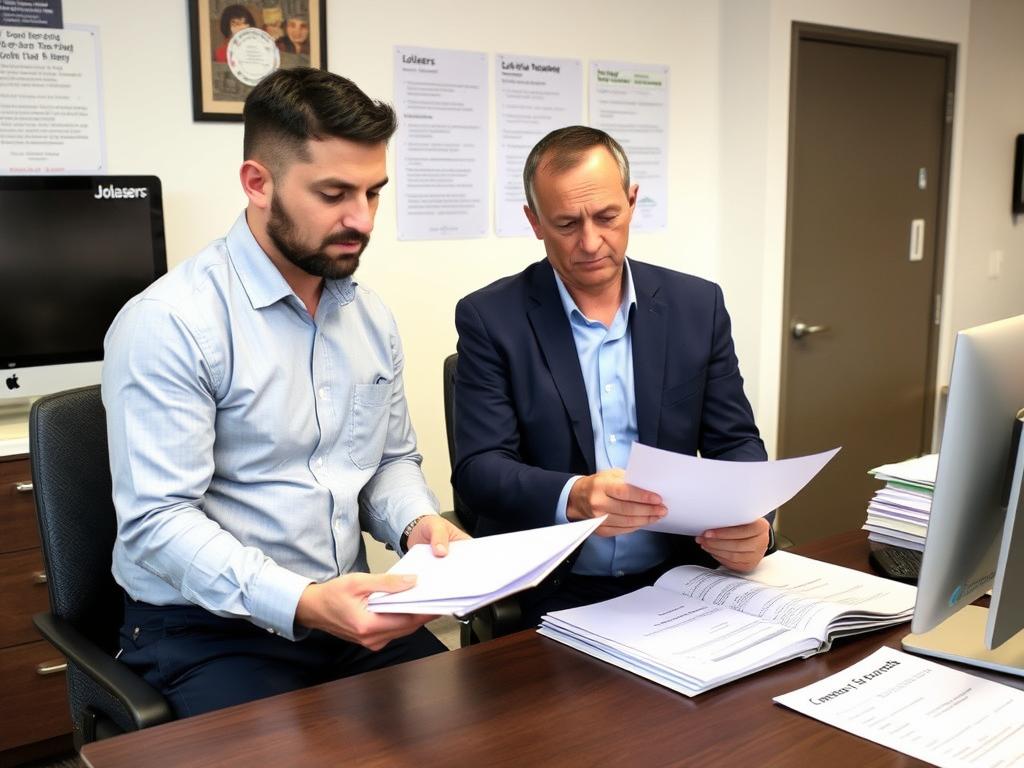Web Services
Workplace bullying can severely impact employee wellbeing, productivity, and your company’s reputation. When allegations arise in Mildura workplaces, how you respond makes all the difference. Professional, independent investigations not only address immediate concerns but also protect your organization from potential legal complications and ongoing workplace disruption. Jolasers Investigations provides specialized workplace bullying investigation services in Mildura that ensure fairness, discretion, and thorough resolution.
Why Professional Workplace Bullying Investigations Matter in Mildura
Workplace bullying claims require immediate, professional attention. In Mildura’s close-knit business community, allegations can quickly affect workplace dynamics and potentially damage your company’s standing. The Fair Work Act provides employees with specific protections against workplace bullying, making proper investigation procedures essential for legal compliance.
When bullying complaints arise, employers have a duty of care to investigate promptly and thoroughly. However, internal investigations often face challenges that can undermine their effectiveness and credibility.
“We have a long history of conducting workplace investigations where all persons involved believed they were treated fairly and with respect. This is important in limiting the damage to relationships in the workplace as much as possible.” – Stephen Oliver, Director, Jolasers Investigations
Professional investigators bring objectivity and specialized expertise to the process, ensuring all parties feel heard while maintaining procedural fairness. This approach helps preserve workplace relationships even during difficult circumstances.
The Industry Secret About Workplace Bullying Investigations
Here is a dirty little industry secret! Companies will often engage a law firm to conduct their workplace investigation, who have a high hourly rate, and the law firm then engages a workplace investigations company like Jolasers Investigations to undertake the investigation, who have a lower hourly rate.
Why not engage Jolasers Investigations at the lower hourly rate, and if you need a legal opinion, engage a law firm with their higher hourly rate for 2 hours, rather than the 15 – 25 hours of the investigation? This approach can save your organization thousands of dollars while still ensuring you receive both professional investigation services and legal guidance when needed.
Save on Your Workplace Investigation Costs
Contact Jolasers Investigations directly to discuss your Mildura workplace bullying investigation needs and learn how our approach can save you money while delivering professional results.
Request a ConsultationThe Risks of Internal Workplace Bullying Investigations
When organizations attempt to handle workplace bullying investigations internally, they often encounter significant challenges that can compromise the process and outcomes. Even with the best intentions, internal investigations face inherent limitations:

Perception of Bias
When investigations are conducted by internal staff, there’s an inherent risk that one or both parties may perceive the process as biased. This perception alone can undermine the investigation’s credibility, regardless of how fairly it was actually conducted.
In Mildura’s business community, where professional relationships often overlap with personal ones, maintaining true impartiality can be especially challenging. Employees may question whether the investigator has pre-existing relationships with involved parties that could influence their judgment.
Limited Expertise
Workplace bullying investigations require specialized knowledge of relevant legislation, interview techniques, evidence gathering, and procedural fairness. Most HR professionals or managers, while skilled in their areas, lack the specific training and experience needed to conduct complex investigations that will withstand potential legal scrutiny.
Without proper expertise, internal investigators may miss critical evidence, fail to ask the right questions, or inadvertently compromise the investigation’s integrity through procedural errors.
Increased Legal Risk
Flawed investigations can expose your organization to significant legal liability. If an aggrieved party believes the investigation was conducted unfairly, they may pursue external complaints through the Fair Work Commission, WorkSafe Victoria, or other legal channels. These external proceedings often scrutinize not just the bullying allegations themselves but also how the investigation was conducted.

Workplace Disruption
Internal investigations can create significant workplace tension and disruption. Colleagues may feel pressured to take sides, rumors can spread, and the investigation itself can become a source of additional stress and conflict. This disruption can impact productivity and morale across the entire organization, not just among those directly involved.
Eliminate Risk of Bias with External Expertise
Engage Jolasers Investigations to conduct your Mildura workplace bullying investigation with complete impartiality and professional expertise.
Benefits of Choosing Jolasers Investigations for Workplace Bullying Cases

Complete Impartiality
As external investigators, we have no pre-existing relationships with your staff or stake in the outcome. This ensures all parties receive fair treatment and eliminates perceptions of bias that often plague internal investigations.

Specialized Expertise
Our investigators are specifically trained in workplace bullying investigations, with comprehensive knowledge of relevant legislation, interview techniques, evidence gathering, and procedural requirements.

Legal Compliance
We ensure your investigation meets all legal requirements under the Fair Work Act, Work Health and Safety legislation, and other relevant regulations, protecting your organization from potential legal challenges.
“We believe that we can quickly build rapport with all persons involved and make the process as easy as possible for all persons involved. People are generally nervous when faced with a workplace investigation interview, and we try and make the process as pain free for all participants as possible, at the same time ensuring we obtain detailed and accurate information.” – Stephen Oliver, Director, Jolasers Investigations

Strict Confidentiality
We maintain the highest standards of confidentiality throughout the investigation process, protecting the privacy of all involved parties and minimizing workplace disruption.

Thorough Documentation
Our comprehensive investigation reports provide clear findings and recommendations, supported by detailed evidence and analysis that can withstand scrutiny if challenged.

Timely Resolution
We understand the importance of resolving workplace bullying allegations quickly. Our efficient processes ensure thorough investigations without unnecessary delays that could exacerbate workplace tensions.
Experience Professional Investigation Services
Contact Jolasers Investigations today to discuss your workplace bullying concerns and how our professional approach can help resolve them effectively.
Contact Us TodayComprehensive Workplace Investigation Services
At Jolasers Investigations, we provide a range of specialized workplace investigation services to address various workplace issues. Our professional approach ensures all matters are handled with the appropriate expertise, sensitivity, and procedural fairness.
| Investigation Type | Description | Learn More |
| Harassment investigation | Thorough investigation of workplace harassment claims, including verbal, physical, or psychological harassment that creates a hostile work environment. | Harassment Investigations |
| Sexual harassment investigation | Specialized investigations into allegations of unwelcome sexual advances, requests for sexual favors, or other verbal or physical conduct of a sexual nature in the workplace. | Sexual Harassment Investigations |
| Misconduct investigation | Professional investigation of employee misconduct allegations, including policy violations, inappropriate behavior, conflicts of interest, and other workplace infractions. | Misconduct Investigations |
| Bullying | Comprehensive investigation of workplace bullying claims, including repeated unreasonable behavior directed toward an employee or group that creates a risk to health and safety. | Bullying Investigations |
Each investigation is conducted with the same level of professionalism, attention to detail, and commitment to fairness that defines our approach at Jolasers Investigations. We tailor our investigation methodology to the specific circumstances while maintaining consistent standards of procedural fairness.
Our Mildura Workplace Bullying Investigation Process
- Initial Consultation: We begin with a detailed discussion about the allegations, gathering preliminary information and developing an investigation plan tailored to your specific situation.
- Evidence Collection: Our investigators gather relevant documentation, communications, and other evidence related to the bullying allegations, ensuring all potential evidence is properly preserved.
- Structured Interviews: We conduct thorough interviews with the complainant, respondent, and witnesses, using specialized techniques to obtain detailed and accurate information while ensuring all parties feel heard and respected.
- Evidence Analysis: Our team carefully analyzes all collected evidence, identifying patterns, inconsistencies, and corroborating information to form objective findings.
- Comprehensive Reporting: We provide a detailed investigation report outlining the allegations, methodology, evidence, findings, and recommendations, giving you a clear basis for appropriate action.
- Follow-up Support: If requested, we can provide guidance on implementing recommendations, communicating outcomes, and developing strategies to prevent future incidents.
Throughout this process, we maintain strict confidentiality and ensure all parties are treated with respect and fairness. Our structured approach helps minimize workplace disruption while thoroughly addressing the allegations.
Important: If you have received a workplace bullying complaint, you need to act fast. These types of issues tend to quickly escalate and can be costly, especially if a person is suspended on full pay as a result of the complaint. Prompt, professional investigation is essential to resolve the matter efficiently.
Don’t Delay – Address Workplace Bullying Promptly
Contact Jolasers Investigations today to initiate a professional workplace bullying investigation in Mildura.
Legal Framework for Workplace Bullying in Australia
Understanding the legal framework surrounding workplace bullying is essential for employers. In Australia, workplace bullying is addressed through multiple legislative avenues that create significant obligations for employers.
Work Health and Safety Legislation
Under Work Health and Safety legislation, employers have a primary duty of care to ensure, so far as is reasonably practicable, the health and safety of workers. This includes managing the risk of workplace bullying as a recognized psychological hazard.
Failure to properly address workplace bullying can result in significant penalties for organizations and individuals, including officers who fail to exercise due diligence in ensuring compliance with WHS obligations.
Fair Work Act
The Fair Work Act 2009 provides workers with the right to apply to the Fair Work Commission for an order to stop workplace bullying. Under this legislation, workplace bullying occurs when a person or group of people repeatedly behaves unreasonably toward a worker, creating a risk to health and safety.
The Commission can make orders to stop bullying but cannot award compensation or penalties. This emphasizes the importance of proper investigation and resolution before matters escalate to this level.
Recent Legal Developments
Recent prosecutions have highlighted the serious consequences of failing to address workplace bullying. For example, in a recent case in Victoria, both a company and its director were convicted and fined for breaches of the Occupational Health and Safety Act related to workplace bullying of a subcontractor. The prosecution specifically cited inadequate anti-bullying policies and procedures as contributing factors.
This legal landscape underscores the importance of having proper systems in place for preventing, identifying, and addressing workplace bullying, including access to professional investigation services when allegations arise.
For more information about workplace bullying regulations and employer obligations, visit the Fair Work Commission’s bullying and harassment resources.
Frequently Asked Questions About Workplace Bullying Investigations
How do I know if I need a workplace bullying investigation?
You should consider a formal investigation when you receive a complaint of workplace bullying, observe patterns of concerning behavior, notice significant changes in employee performance or attendance that may indicate bullying, or become aware of conflicts that could involve bullying behaviors. Early intervention through professional investigation can prevent escalation and reduce potential harm.
How long does a workplace bullying investigation typically take?
The duration depends on the complexity of the case, number of parties involved, and availability of witnesses. Most investigations take between 2-4 weeks from initial consultation to final report. We prioritize thoroughness while working efficiently to minimize workplace disruption and resolve matters promptly.
What happens if bullying is substantiated through the investigation?
If bullying is substantiated, our report will include recommendations for appropriate action based on the severity of the conduct and relevant workplace policies. These may include disciplinary measures, training, mediation, policy improvements, or other interventions. The final decision on what action to take remains with the employer, but our recommendations provide a solid foundation for appropriate response.
Can you conduct investigations remotely for Mildura businesses?
Yes, we can conduct investigations through a combination of on-site and remote methods. While in-person interviews are often preferable, we can utilize secure video conferencing when necessary. We regularly serve clients throughout regional Victoria, including Mildura, and can tailor our approach to meet your specific needs and circumstances.
What makes Jolasers Investigations different from other providers?
Our approach combines professional expertise with a focus on preserving workplace relationships. We emphasize procedural fairness, thorough evidence gathering, and clear communication throughout the process. Our investigators are specifically trained in workplace investigations and understand the unique dynamics of regional workplaces like those in Mildura. We also offer competitive rates by providing investigation services directly rather than as a subcontractor to law firms.
Contact Jolasers Investigations for Your Mildura Workplace Bullying Investigation
If you’re dealing with workplace bullying allegations in Mildura, don’t delay in seeking professional assistance. Prompt, expert investigation is essential to address the situation effectively, protect your employees, and minimize potential legal and operational risks.
Ready to Discuss Your Investigation Needs?
Contact us today to speak with our experienced investigators about your situation and how we can help.



















































